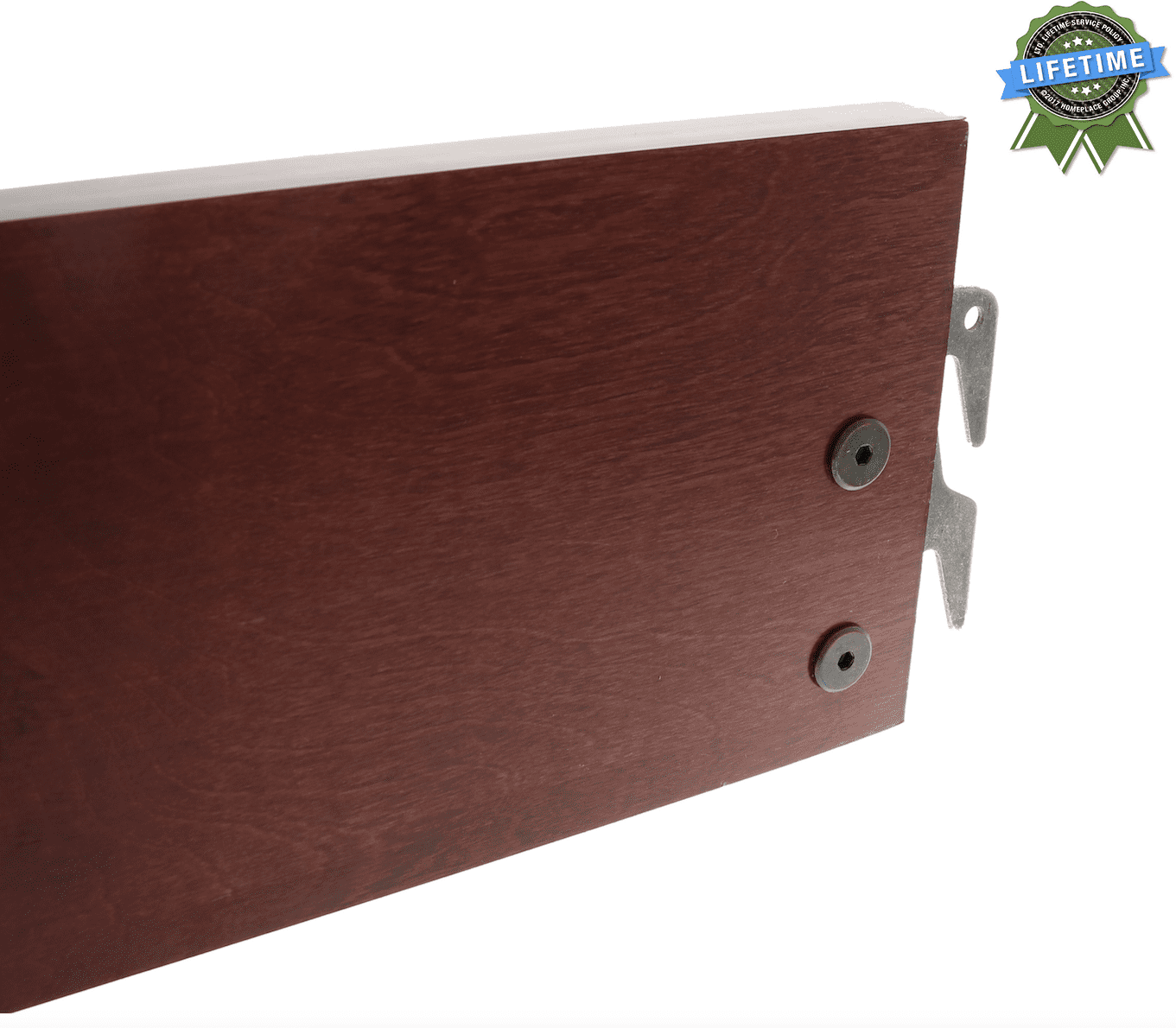
It’s placed underneath the sheets for the easiest installation and has grip strips to keep it from moving around.

The Shrunks Inflatable Bed Rail can be deflated and folded flat when not in use, and then re when ready to use (no pump required, although you can use one if you want). Whether you’re going on vacation or just want something for whenever your little one sleeps at grandma and grandpa’s house, a travel toddler bed rail is convenient to have on hand. Once the rail is dry, reinstall it onto the head and foot boards.Dimensions: 48 x 5 inches| Material: PVC | Adjustable length: No | Special features: Travel friendly inflatable When you are finished, wipe off any excess glue, and let the rail dry. Space your remaining screws along the lip every 6-to-10 inches, and drill pilot holes for each. This should position your lip exactly where you want it. Be aware that some glue will squeeze out. The screws should pull the lip wood snug against the rail. Rub wax on the screws to lubricate them, which aids their installation into the hardwood. Do not drill through the wood to the bed rail's finished side, as this mars the bed rail's appearance. Drill a pilot hole through the lip and approximately half way into your bed rail. With the rail's finished side facing down, and the lip's edge facing up, measure 1 inch from either end. Measure 1 3/4 inches from the drill bit's tip, and wrap a piece of tape to act as a depth guide. You will use the drill bit to drill pilot holes in your hardwood. Select a drill bit that is approximately the same size as the solid portion of your wood screws. Once you determine that your board will fit properly, apply carpenter's glue generously to its edge, and then clamp the new lip into position on the rail. This ensures that your new rail is level with the other bed rail. Line up your new rail at the top line of the rail you removed. The 1-inch side of the board will attach to the rail, and the 1 1/2-inch board will support the slats. Use your marker line as a guide to position your replacement board no more than 2 inches from each end, lengthwise. Use the chisel to separate the lip from the rail, and to clean the rail's entire inner surface of any remaining glue residue. There should not be any nails in the rail, but remove them if you encounter them. Lay the rail flat, and remove existing screws with your drill.


Use the marker to mark the top edge of the damaged lip, in the intact areas. Remove the bed rail by driving it upward, with the mallet, out of its hook-and-pin joints.

If your slats sag, break, or become dislodged easily, and if you do not want to go use a netted slat system, then you may want to increase the slat's plank width and remeasure your rail span, which can warp with age.
#Wooden bed rails for queen size bed install
If your bed is wide, you also may want to install a center support rail between your head and foot boards to further disperse the load. If you use netted slats, you can spread the transfer load to provide better lateral support and reduce the risk of board failure. Some bed designs transfer weight between the slats, rails, and head and foot-board posts.


 0 kommentar(er)
0 kommentar(er)
